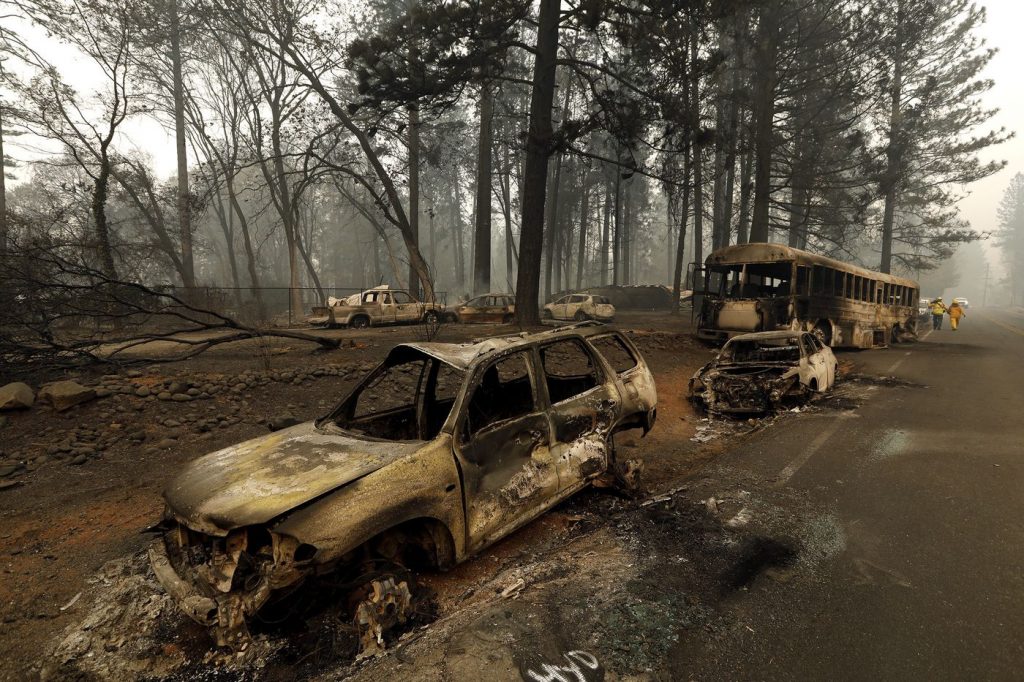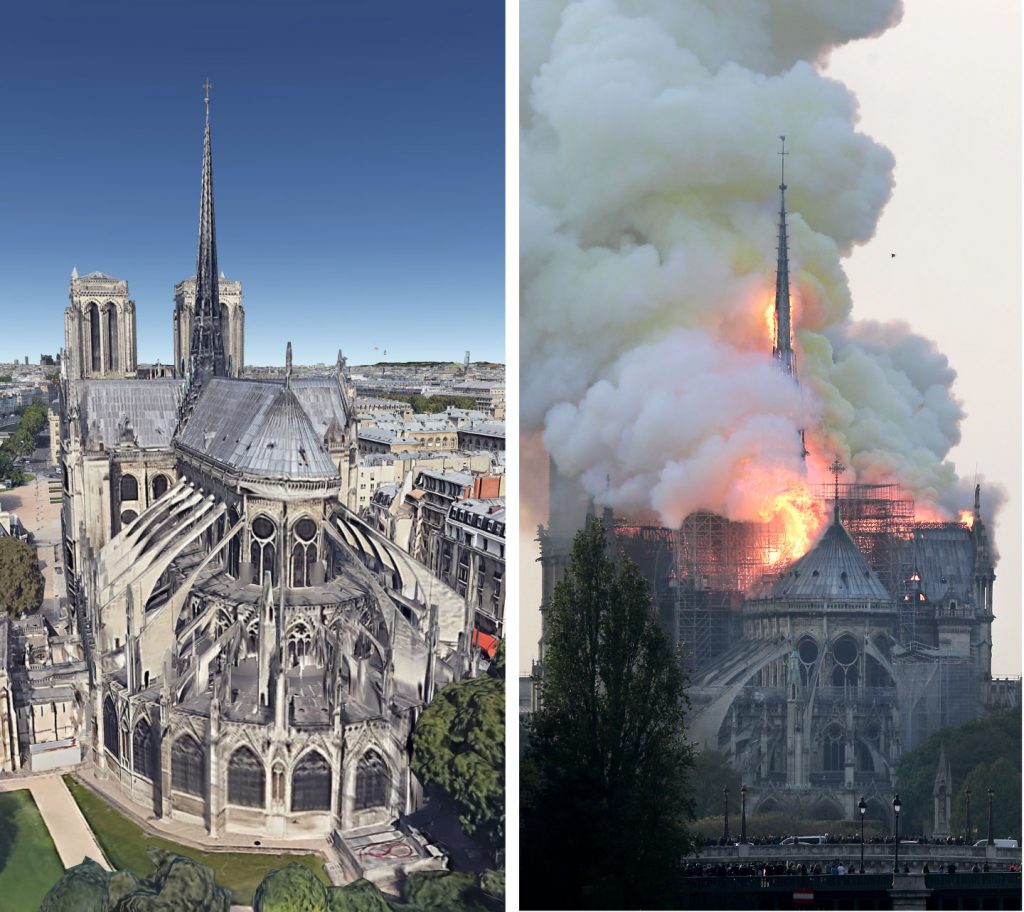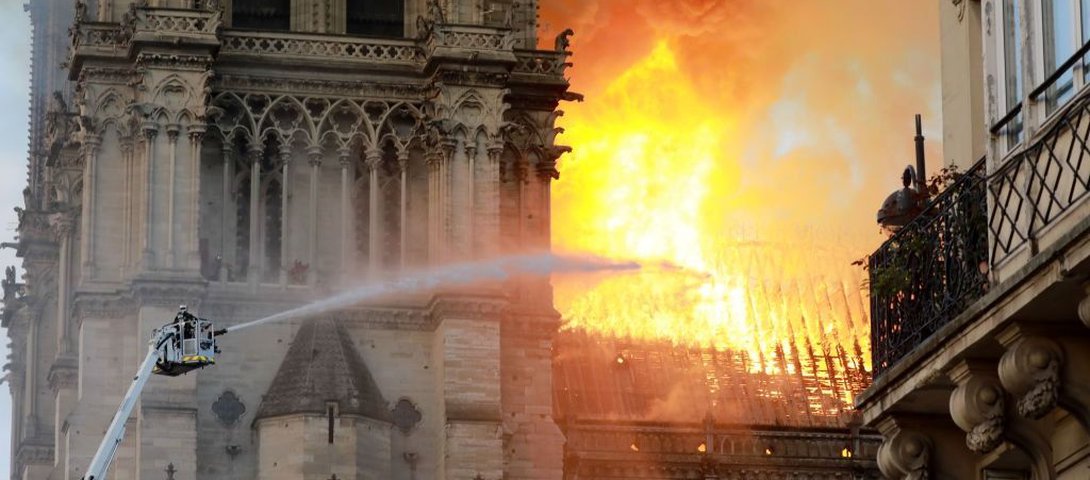Even for those who never saw Notre Dame Cathedral, even for those who have no use for organized religion, the fire engulfing one of humankind’s oldest and greatest architectural structures was a sad sight.
Some perspective is necessary however. It was man-made thing, and though great art has been lost, no lives were lost. What spiritual and global meanings can we draw from the loss of Notre Dame Cathedral?
“This building took 100 years to construct and was undone in less than a day. We long for some reason, some justification, something to help us mourn the loss of a bit of beauty in the world,” a scholar on medieval religion and violence said.

It took billions of years for present lifeforms on earth to evolve, and they are being decimated in a matter of decades through man’s greed, stupidity and inertia.
People here are still reeling from the wildfire that incinerated the nearby mountain town called Paradise, and killed nearly 90 people. The over-the-top coverage of Notre Dame’s fire on cable TV looks like another sign that elites are refusing to read.
Such intricate symbols of man-made grandeur were monuments the Catholic Church built to itself as much as they were intended to give illiterate people an experience of the divine. What is their loss if we continue to desecrate the earth and decimate the creatures that evolved along with us?
“The French,” an American columnist living in Paris wrote, “don’t spend much time in churches,” adding, with unintended irony, “residents might not have fully realized it until Monday, but I think it reassured them to know that at the heart of their highly planned city was someplace entirely non-rational and non-Cartesian.”
Why does the human heart revere most what the human mind and hand have wrought? Why do most people’s hearts soar within a cathedral but remain coffined when mountainous masses of cumulus slide across an azure sky?
“Notre Dame is our history, our literature, our imagination,” President Emmanuel Macron said. “The place of all our great events, our epidemics, our wars, our liberations, the epicenter of our lives.”
Humanity needs new epicenters, places not of symbol and stone, but cathedrals of nature where the heart and spirit can find healing and renewal. Perhaps that’s one metaphysical meaning serious people can draw from this cultural and architectural misfortune.
An author wrote after a fire in 1174 that destroyed the Canterbury Cathedral that this “house of God hitherto delightful as a paradise of pleasures, was now made a despicable heap of ashes, reduced to a dreary wilderness.”
Dreary wilderness? I’m reminded of John Muir lamenting the damming of Hetch Hetchy Valley by the City of San Francisco for water and power. It broke his heart. Imagine damming Yosemite Valley for water and power. That’s what they did at Hetch Hetchy.
Muir wrote: “These temple destroyers, devotees of ravaging commercialism, seem to have a perfect contempt for Nature, and, instead of lifting their eyes to the God of the mountains, lift them to the Almighty Dollar.”
“Dam Hetch Hetchy! As well dam for water-tanks the people’s cathedrals and churches, for no holier temple has ever been consecrated by the heart of man.”

As a young man I hiked into Hetch Hetchy one spring with a friend, cross-country skis strapped to our backpacks since snow still covered the slopes above what was once a majestic valley.
I’m glad Muir didn’t live to see truncated waterfalls fall into a man-made lake, or a dirty bathtub ring of the high water mark on the foreshortened granitic rockfaces.
Not having seen Notre Dame, I didn’t understand why they built the great cathedrals during medieval times, symbols of such magnificence amidst so much squalor, until my Russian cultural hosts took me to St. Isaac’s, the largest cathedral in Russia. The Berlin Wall had just fallen, and the Russians knew that the USSR was about to collapse.
We were talking as we walked into the cavernous space, empty even of pews, and decorated with gold and jewels in the high Russian style. I was struck silent, and asked my hosts to be quiet as I walked alone and stood under the huge dome.
I had an intimation of the same feeling you get in the High Sierras with the “Range of Light” stretched out before you. At best, a few people of religious power and wealth designed the great cathedrals to recreate for the many the feeling of immensity, awe and sublimity.
They’ll rebuild Notre Dame; don’t grieve for it. Mourn what man is doing to the earth, and move beyond sorrow to save what is left.
As John Muir said, “Everybody needs beauty as well as bread, places to play in and pray in, where Nature may heal and cheer and give strength to body and soul alike.”
Martin LeFevre

